In the world of Android-compatible smartwatches, Samsung is the biggest player. Dominating an industry has benefits for the consumer, such as wide availability, ease of access to support, and a large selection of accessories. However, dominating an industry also can sometimes lead to a company resting on its laurels and being slow to innovate. With the brand new Samsung Galaxy Watch Ultra and Galaxy Watch 7, Samsung is proving that being the top dog can result in a little laziness.
Both watches were launched today and are available for pre-order now, but I got to try them out a few days early. Below are my hands-on experiences with them.
Galaxy Watch Ultra design
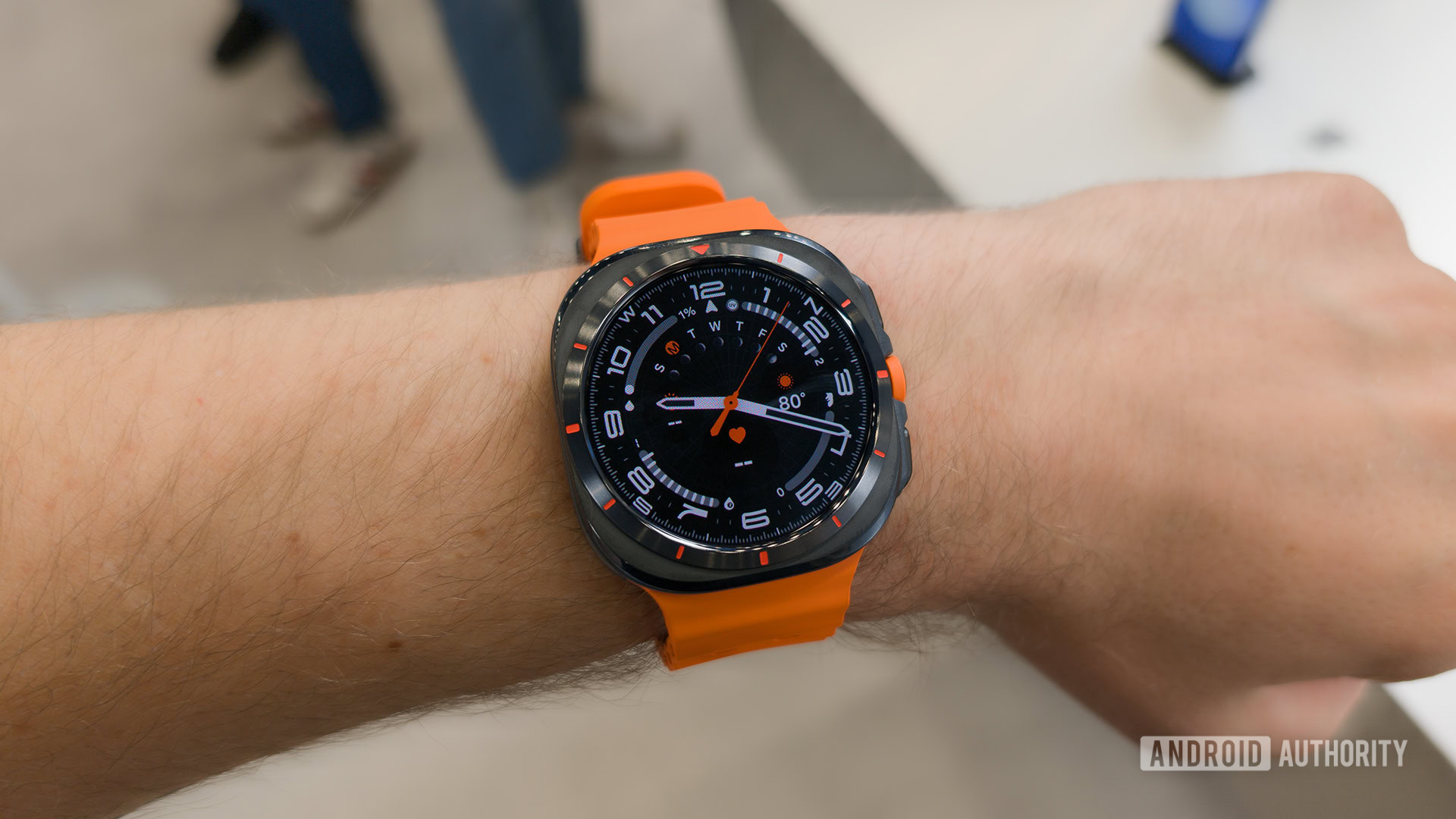
C. Scott Brown / Android Authority
Let’s start with the Galaxy Watch Ultra, which is, technically speaking, the first of its kind. Up until now, there’s never been an Ultra-branded Galaxy Watch. Even though the “Ultra” moniker is closely tied to the Samsung Galaxy S series, we need to be honest about this watch: it is so obviously a direct response to the overwhelming success of the Apple Watch Ultra and much less an innovative new Samsung product.
At the pre-Unpacked event, when I got to go hands-on with the Galaxy Watch Ultra, the model Samsung handed me had a ribbed orange strap, making it look remarkably similar to the promotional imagery you see everywhere for the Apple Watch Ultra 2. The strap matched the orange button on the side of the Galaxy Watch Ultra (called the Quick Button, which I’ll get to in a bit), similar to the orange-colored Action Button on the Apple Watch Ultra. The similarities are so flagrant it’s impossible not to notice them.
With the Galaxy Watch Ultra design, Samsung looked at Apple and said, 'Hey, we can do that, too.'
That all being said, the Galaxy Watch Ultra is not a 1:1 copy. The 1.5-inch display is circular, for example, although it’s housed in a “squircle” case, which does seem to call back to the Apple Watch Ultra design a bit. The case is also made of grade four titanium, which is the strongest grade of pure titanium. The Apple Watch Ultra 2 is also made of titanium, but it’s a grade five alloy, so the Galaxy Watch Ultra is technically more premium (even if, ironically, a titanium alloy is stronger than pure titanium, so Apple’s got Samsung beat from that perspective).
Like the Apple Watch Ultra 2, the Galaxy Watch Ultra is also physically massive. Seriously, this 47mm, 60.5g monster is one of the biggest, heaviest smartwatches I’ve ever had on my wrist. If you like big watches and you cannot lie, this is the watch for you. Considering the popularity of the Apple Watch Ultra 2 — which is slightly bigger and heavier at 49mm and 61.5g — many people don’t seem to mind this. If you’re like me, though, and want your watches to be on the smaller/lighter side, you will not be happy with this one at all.
We hope you like big watches, because the Galaxy Watch Ultra dwarfs all other Galaxy Watches in size and weight.
There are three other things to note about the Galaxy Watch Ultra’s design. The first is that the bezel does not rotate. If you were hoping for a spinning case to control the watch like you do the Galaxy Watch 6 Classic, that’s not happening here. Secondly, although the new Quick Button spins, it is not a rotating crown — just a button. This is similar to the OnePlus Watch 2, which also has a fake rotating crown. Considering the price of this watch, it’s ridiculous that Samsung couldn’t have included at least one of these features. Thirdly, the strap connects to the case of the watch with a new system Samsung is calling Dynamic Lug. While the company claims this helps straps stay more secure while simultaneously being easier to swap out, it also means any straps you currently have for any watch — including any previous Galaxy watches — will not work.
The silver lining with that third note is that the Dynamic Lug system is pretty good. I found the straps to be very secure, and removing them was as easy as pressing a small button on the bottom of the case. I’m not sure if that was worth losing strap compatibility, but at least the system works well.
Finally, the Galaxy Watch Ultra comes in three case colors: Titanium Silver, Titanium Gray, and Titanium White.
Galaxy Watch 7 design
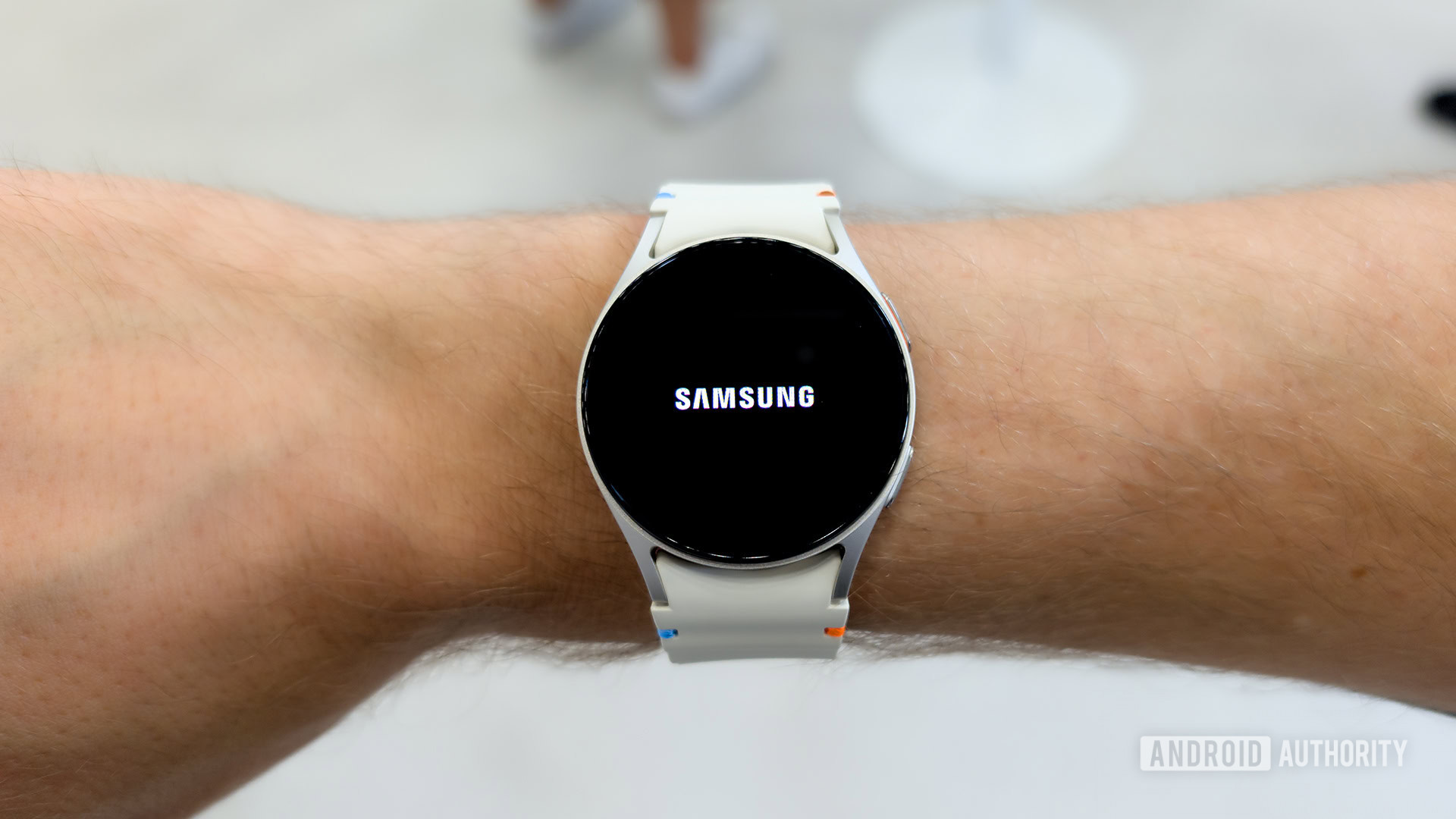
C. Scott Brown / Android Authority
Honestly, there is almost nothing to talk about with the Galaxy Watch 7 design because so little has changed. Just like with the Galaxy Watch 6, the Galaxy Watch 7 comes in two case sizes: 40mm and 44mm. There are two buttons on the side with one tinged orange to signify it as the power button, and any 20mm strap you already own will fit it. In fact, if you hold a Galaxy Watch 6 and Galaxy Watch 7 next to each other, it would be difficult to tell them apart.
The Galaxy Watch 7 looks exactly like the Galaxy Watch 6. And the Classic model is gone, too.
The only dead giveaway that separates the Galaxy Watch 6 from the Galaxy Watch 7 is the case color options. For the 40mm size, you have the option of green or Cream, which are very different from the gold and Graphite colors of last year’s model. Meanwhile, the 44mm case comes in green or silver. The colors all looked great when I saw them, but none really stood out as remarkable.
Really, the most significant thing about the Galaxy Watch 7 design is what’s not there, which is a Galaxy Watch 7 Classic. Samsung decided to stop the Classic design (again), which means you folks who love rotating bezels have no option this year whether you go Ultra or not.
New hardware and features
Obviously, Samsung isn’t just tossing last year’s smartwatches out with a new coat of paint and calling it a day. There are some notable hardware upgrades with these watches and Samsung is also introducing a few new features.
Galaxy Watch Ultra
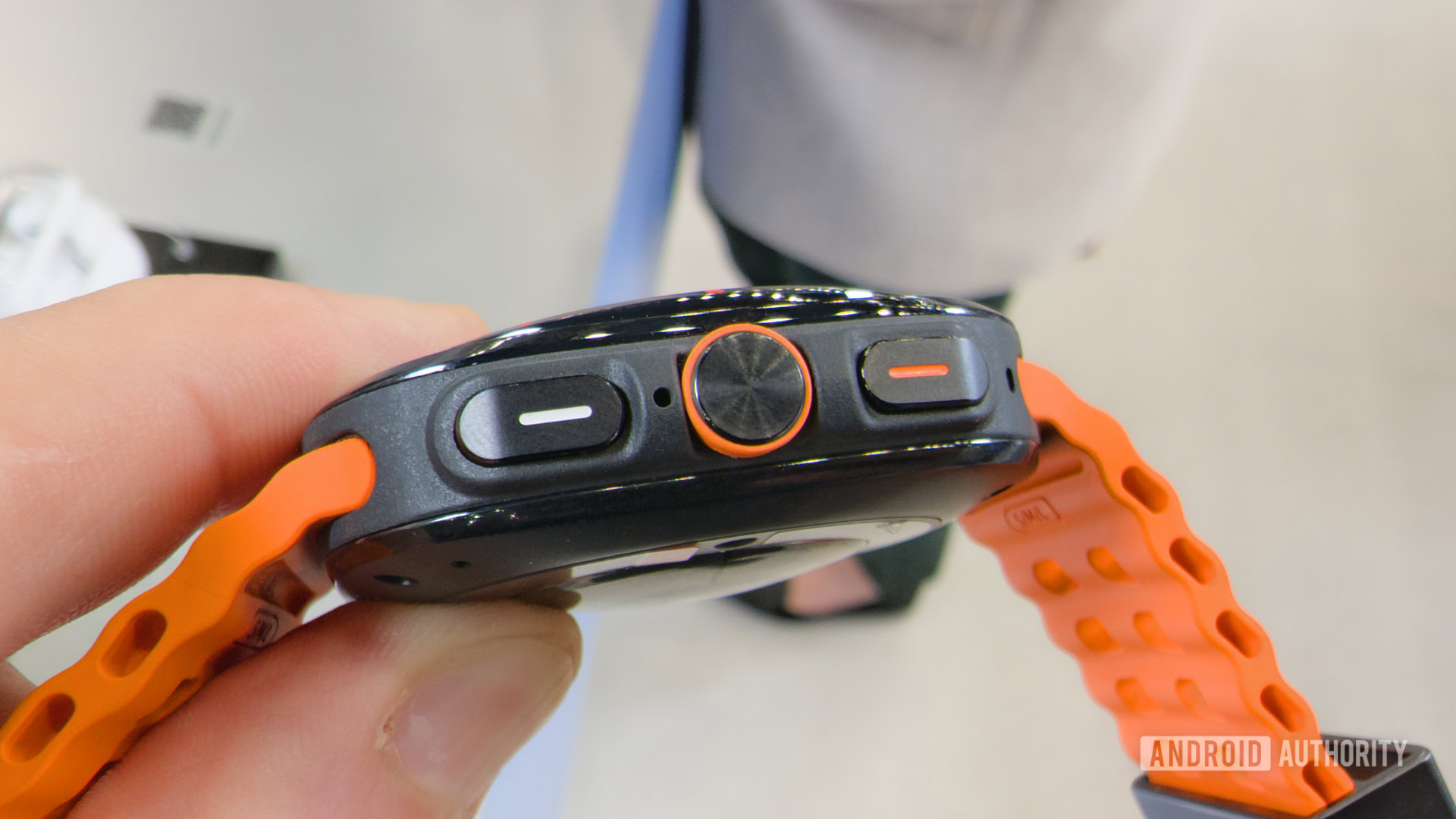
C. Scott Brown / Android Authority
The most forward-facing hardware update for the Galaxy Watch Ultra is the introduction of the Quick Button. This orange button that looks like it should be a rotating crown (sigh, but it isn’t) acts as a shortcut key, essentially. By default, a single tap of the button launches your most recent activity so you can immediately start tracking it. Once you’re tracking an activity, you can tap the button to pause/restart that activity, double-tap to start a new lap or the next exercise, and long-press to stop the workout or start the next workout. You can also long-press for five seconds to initiate an SOS tone should you need help. This tone gets very, very loud (I tried it out in the Unpacked session, and it was deafening).
Thankfully, the Quick Button is somewhat customizable. A single tap, for example, could launch the flashlight app instead, among other things. You can also disable it altogether.
Another new bit of hardware is on the back of the case. Here, you’ll find 3x as many sensors as you would see on a Galaxy Watch 6 (13 sensors as opposed just four on last year’s models). Samsung claims this sensor increase results in better, faster, and more efficient health tracking.
The Galaxy Watch Ultra has a new button, a new processor, a huge battery, and more health tracking than ever before.
Inside the watch, you’ll also find the Exynos W1000 processor, the first 3nm SoC built into a Galaxy Watch. This is a powerful chip that should result in better performance and battery life. While I was using the Galaxy Watch Ultra, I saw no lag at all — it was zippy and smooth.
Speaking of battery life, the battery inside the Galaxy Watch Ultra is the same size as the one in the Galaxy Watch 5 Pro, which is 590mAh. Considering the Galaxy Watch 5 Pro had an older chip and still lasted around two days on the same size battery, we can only assume the Galaxy Watch Ultra will meet or exceed that level. I didn’t have enough time with it to give any insight on battery life, unfortunately.
There’s also a new dual-frequency GPS system (L1 and L5). With this paired system, you should get more accurate GPS tracking in places with lots of obstructions, such as cities and dense forests. The Galaxy Watch Ultra is also smart enough to swap between the two systems for the best performance-to-battery-life ratio for whatever situation you’re in at the moment. This is similar to the Apple Watch Ultra 2, which has the same L1 + L5 bands.
The new dual-frequency GPS system promises better, more power-efficient location tracking.
As far as health tracking goes, the most notable new feature is an FDA-approved sleep apnea detection system. This is a first-of-its-kind for a consumer wearable — even the Apple Watch Ultra 2 doesn’t have this. It won’t be a full replacement for a true sleep apnea diagnosis, but it will at least give you an early warning if you’re developing symptoms.
Outside of these major updates, the Galaxy Watch Ultra also offers previously announced features such as AT/AnT Heart Rate Monitoring, a Functional Threshold Power Test for cyclists, and the ability to race against yourself by recording outdoor runs and then repeating the route.
Galaxy Watch 7
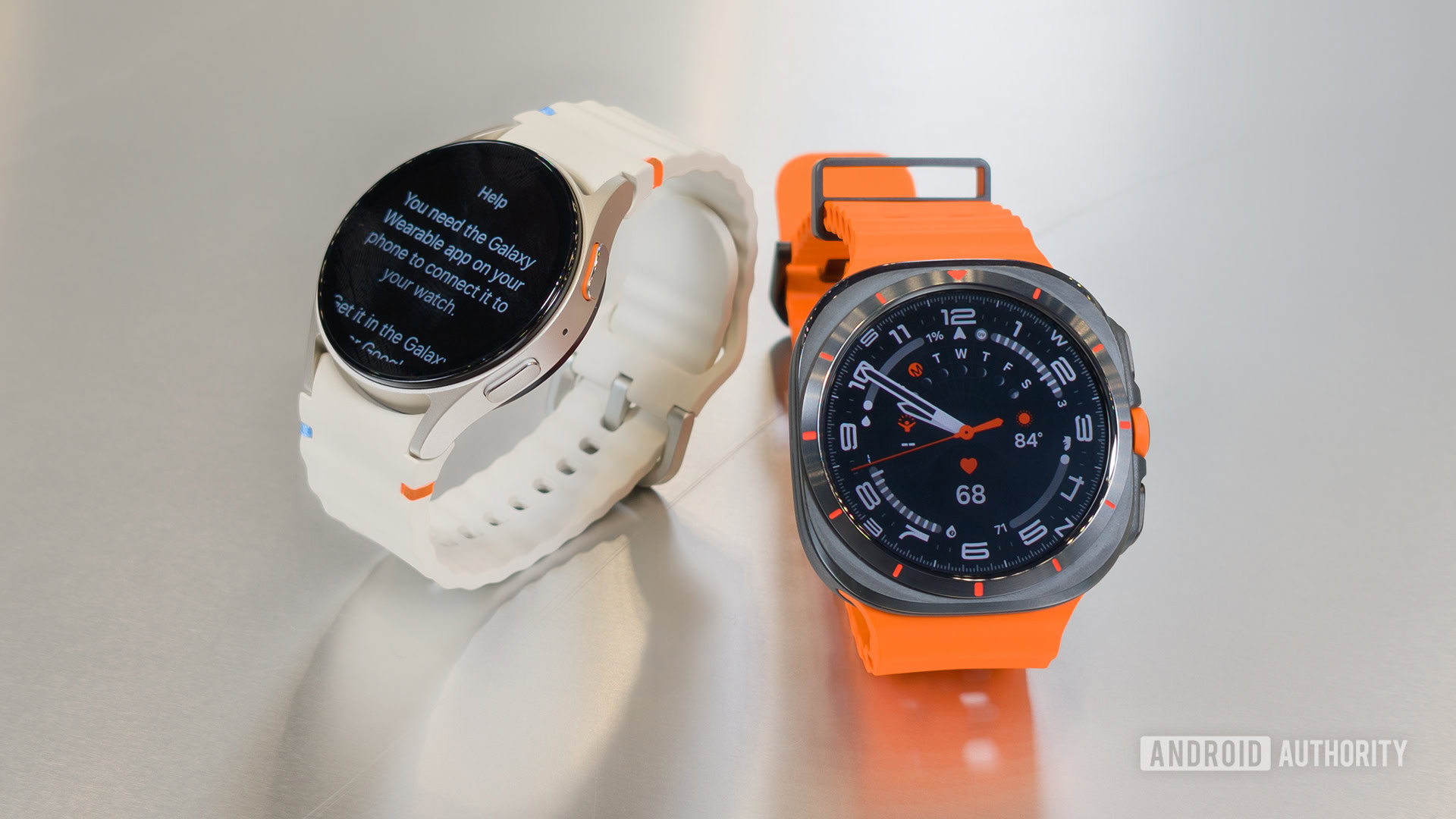
C. Scott Brown / Android Authority
I hope you read through all the new features of the Galaxy Watch Ultra first because I can sum up everything the Galaxy Watch 7 can do in one sentence: it does practically everything the Galaxy Watch Ultra can do.
In a very strange twist, the Galaxy Watch 7 can do almost everything the Ultra can do.
Aside from things involving the Quick Button (which the Galaxy Watch 7 doesn’t have) and battery life, there are no significant functional differences between the Galaxy Watch 7 and the Ultra model. The 3nm W1000 processor, the dual-frequency GPS, the 13 sensors, the sleep apnea tracking support — it’s supported on the Galaxy Watch 7.
If you’re wondering now what the point is of the Galaxy Watch Ultra, well…that’s a great question.
Specs
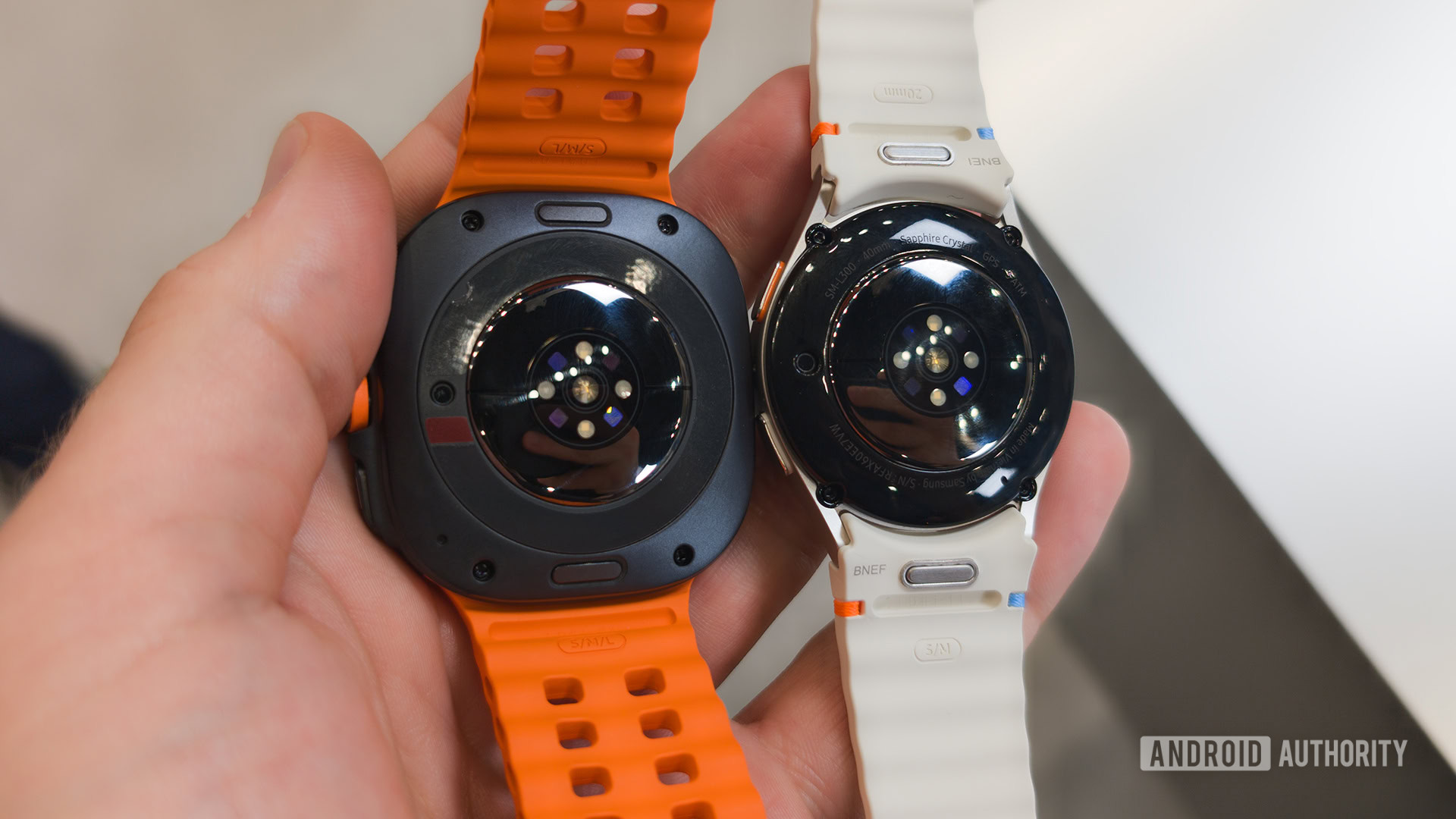
C. Scott Brown / Android Authority
The specs table below is notable because it shows just how much carries over from the non-Ultra watches to the Ultra model. We haven’t gotten into pricing yet, but keep the similarities of this specs table in mind as we head into that conversation.
Dimensions and weight | Galaxy Watch 7 40mm: 40.4 x 40.4 x 9.7mm 44mm: 44.4 x 44.4 x 9.7mm | Galaxy Watch Ultra 47mm: 47.4 x 47.1 x 12.1mm |
Materials | Galaxy Watch 7 Case: Aluminum Armor | Galaxy Watch Ultra Case: Titanium grade 4 |
Display | Galaxy Watch 7 40mm: 1.3-inch 44mm: 1.5-inch | Galaxy Watch Ultra 1.5-inch 3,000 nits peak brightness |
Processor | Galaxy Watch 7 Exynos W1000 | Galaxy Watch Ultra Exynos W1000 |
RAM | Galaxy Watch 7 2GB | Galaxy Watch Ultra 2GB |
Storage | Galaxy Watch 7 32GB | Galaxy Watch Ultra 32GB |
Battery | Galaxy Watch 7 40mm: 300mAh WPC-based wireless charging | Galaxy Watch Ultra 590 mAh WPC-based wireless charging |
Connectivity | Galaxy Watch 7 Bluetooth 5.3 | Galaxy Watch Ultra Bluetooth 5.3 |
OS | Galaxy Watch 7 Wear OS 5 | Galaxy Watch Ultra Wear OS 5 |
Sensors | Galaxy Watch 7 Samsung BioActive sensor (Optical Bio-signal sensor, Electrical Heart Signal, Bioelectrical Impedance Analysis) | Galaxy Watch Ultra Samsung BioActive sensor (Optical Bio-signal sensor, Electrical Heart Signal, Bioelectrical Impedance Analysis) |
Durability | Galaxy Watch 7 5ATM | Galaxy Watch Ultra 10ATM |
Compatibility | Galaxy Watch 7 Compatible with Android 11.0 or later with RAM 1.5 GB or higher Some features require a Samsung Galaxy and Galaxy AI-compatible phone No iOS support | Galaxy Watch Ultra Compatible with Android 11.0 or later with RAM 1.5 GB or higher Some features require a Samsung Galaxy and Galaxy AI-compatible phone No iOS support |
Colors | Galaxy Watch 7 40mm: Green, Cream 44mm: Green, Silver | Galaxy Watch Ultra Titanium Silver, Titanium Gray, Titanium White |
Bands | Galaxy Watch 7 Sport | Galaxy Watch Ultra Marine |
Samsung Galaxy Watch Ultra and Galaxy Watch 7: Ultra close in everything but price
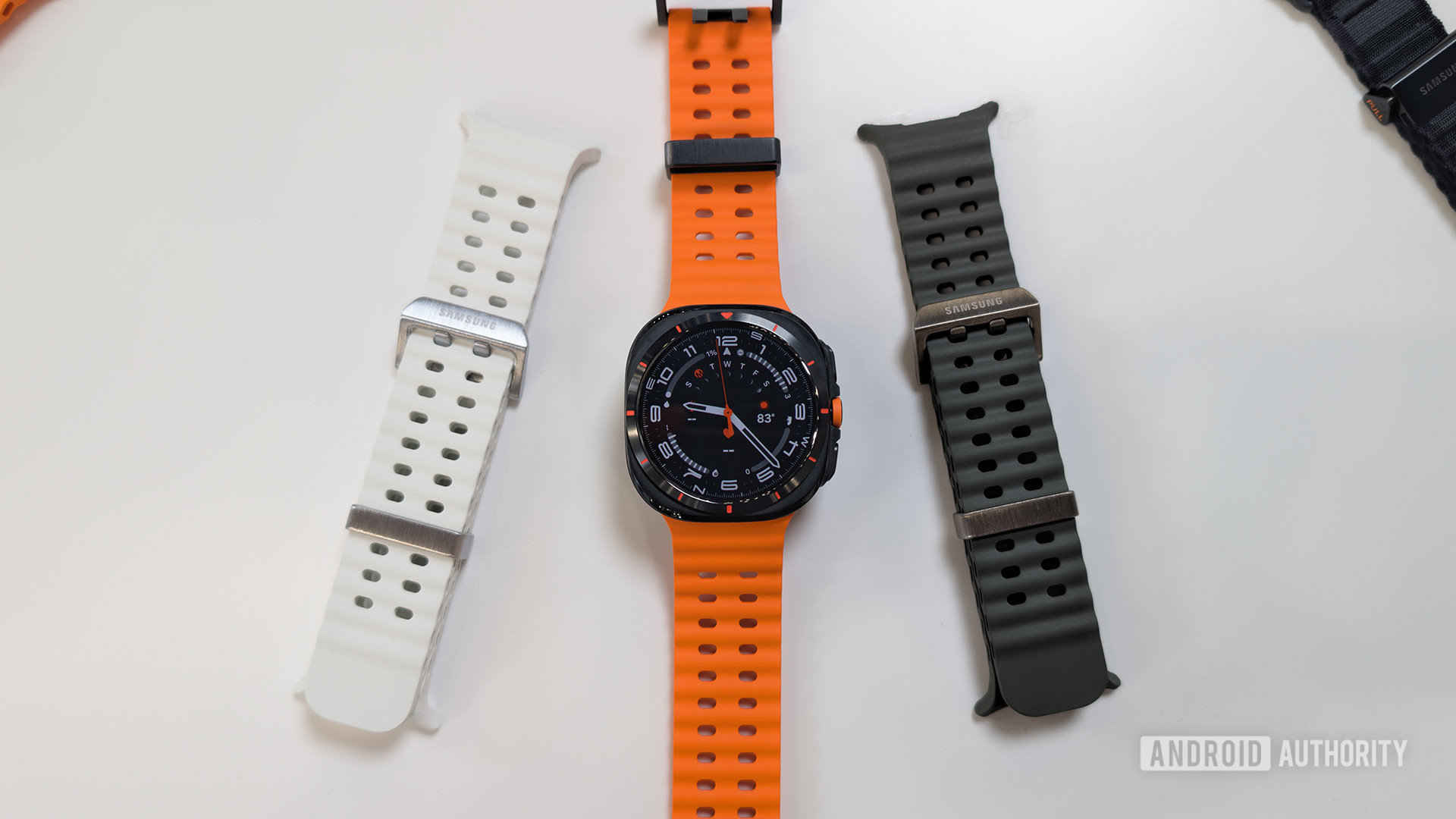
C. Scott Brown / Android Authority
OK, just as a quick recap, here is a complete list of all the things the Samsung Galaxy Watch Ultra has that the Galaxy Watch 7 doesn’t have:
- 590mAh battery
- Quick Button
- Case made of titanium
- Dynamic Lug strap system
- 10ATM rating
That’s it. Those five things make the Ultra “ultra.” What would you say those five things are worth? $100? $200? How about $250? Well, I’m sorry, but Samsung thinks those five things are worth a whopping $350.

Samsung Galaxy Watch Ultra
Quick band swap • Dual-frequency GPS • Long battery life
Ultra capabilities and durability
The first smartwatch to run Wear OS 5, the Samsung Galaxy Watch Ultra elevates Samsung's status in the wearables market. With 10ATM, IP68, and MIL-STD-810H certification, it's safe to swim in the ocean with this watch. A 1.5-inch AMOLED always-on display covered by Sapphire Crystal glass, a robust set of health and fitness trackers and sensors, and a 590mAh battery promise an ultra experience.
Yes, the Galaxy Watch Ultra’s starting price is a jaw-dropping $649, while the Galaxy Watch 7 starts at just $299. I’m trying to be as diplomatic as possible here, but in what universe is a bigger battery, a more premium build, and an extra button equate to a doubled price? Make me understand it, Samsung.
I can answer my own question here. The Galaxy Watch Ultra costs $649 because the Apple Watch Ultra 2 costs $799, so Samsung, by proxy, is not overcharging its customers — it’s undercutting the competition by $150. When you think of it that way, it seems like a brilliant strategy.
After using it for a bit, I am astounded by the idea that Samsung thinks the Galaxy Watch Ultra is worth $649.
The problem, though, is that the Apple Watch Series 9 is not as close to the Apple Watch Ultra 2 when it comes to features and hardware. The Series 9 doesn’t have all the sensors of the Watch Ultra 2, nor does it have the dual-frequency GPS. Plus, the battery life of the Watch Ultra 2 is significantly better than that of any other non-Ultra Apple Watch. Add in the “Apple tax,” and Apple fans have no problem dishing out for the Watch Ultra 2.
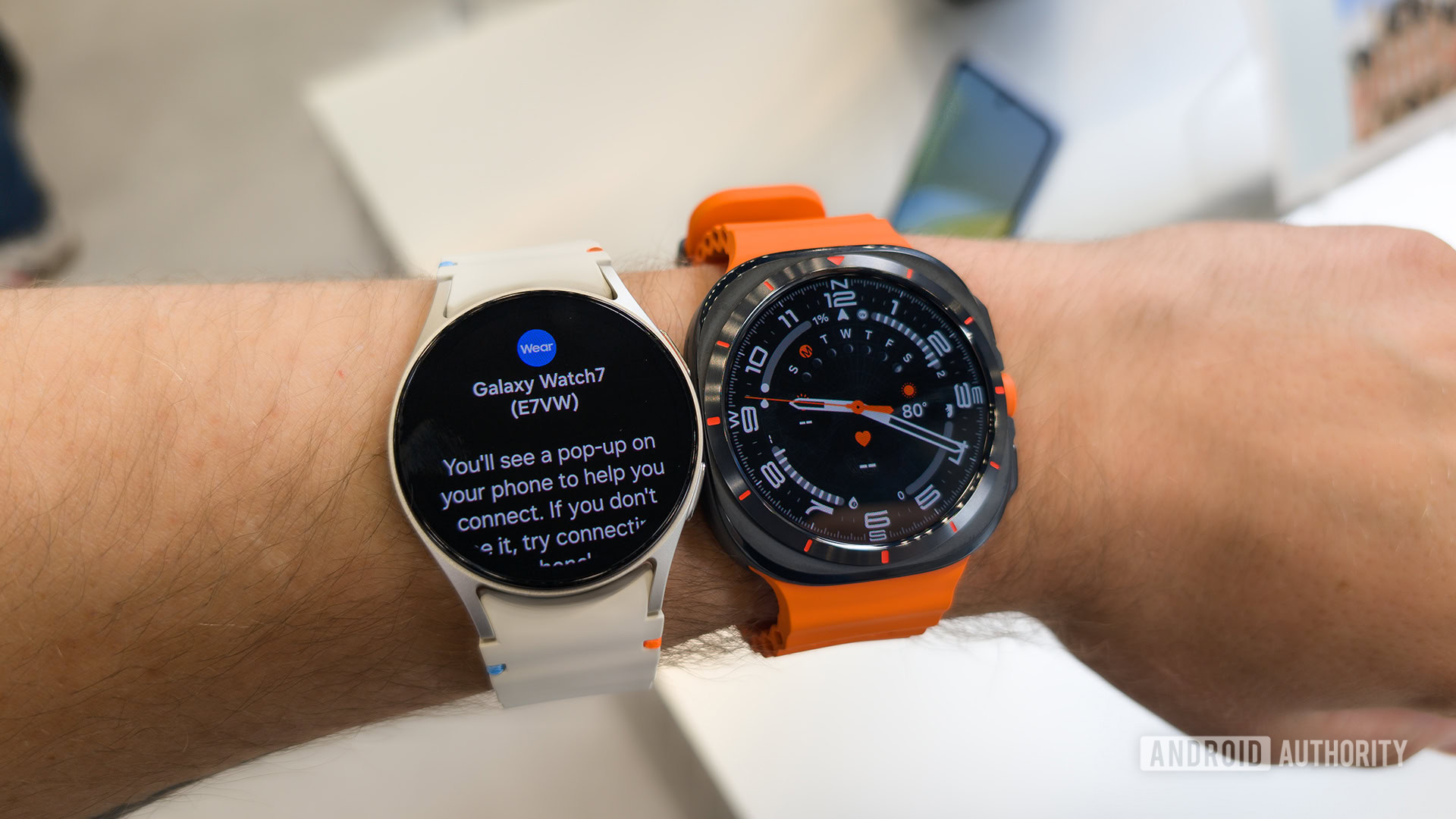
C. Scott Brown / Android Authority
Samsung fans aren’t as easily swayed, though. Yes, there will be people who blindly buy the Galaxy Watch Ultra because it’s “the best one.” But after spending a bit of time with it, I can’t imagine why anyone who did even the tiniest of research would think it is worth $649, especially when the Galaxy Watch 7 is right there for $299. In fact, a Galaxy Watch 7 and a Galaxy Ring will only be $50 more than just a Galaxy Watch Ultra on its own!

Samsung Galaxy Watch 7
Enhanced storage • Sleep apnea detection • Stylish design
Comfortable and capable
Available in two sizes, the Samsung Galaxy Watch 7 is a refinement over older Galaxy Watches. A rich set of health and fitness tracking features include Sleep Apnea detection. Available in 40mm and 44mm sizes, three band materials to choose from, and now up to 32GB of internal storage for all your apps and music.
I should reserve my judgment, though, because we haven’t had enough time with these watches. My initial reaction, though, for both watches is that the Galaxy Watch 7 is filled with notable upgrades in a boring chassis while the Galaxy Watch Ultra is just a bigger, heavier, and, dare I say, uglier version of a Galaxy Watch 7 that costs twice as much.
Sorry, Samsung, but I’m ultra-confused over here.

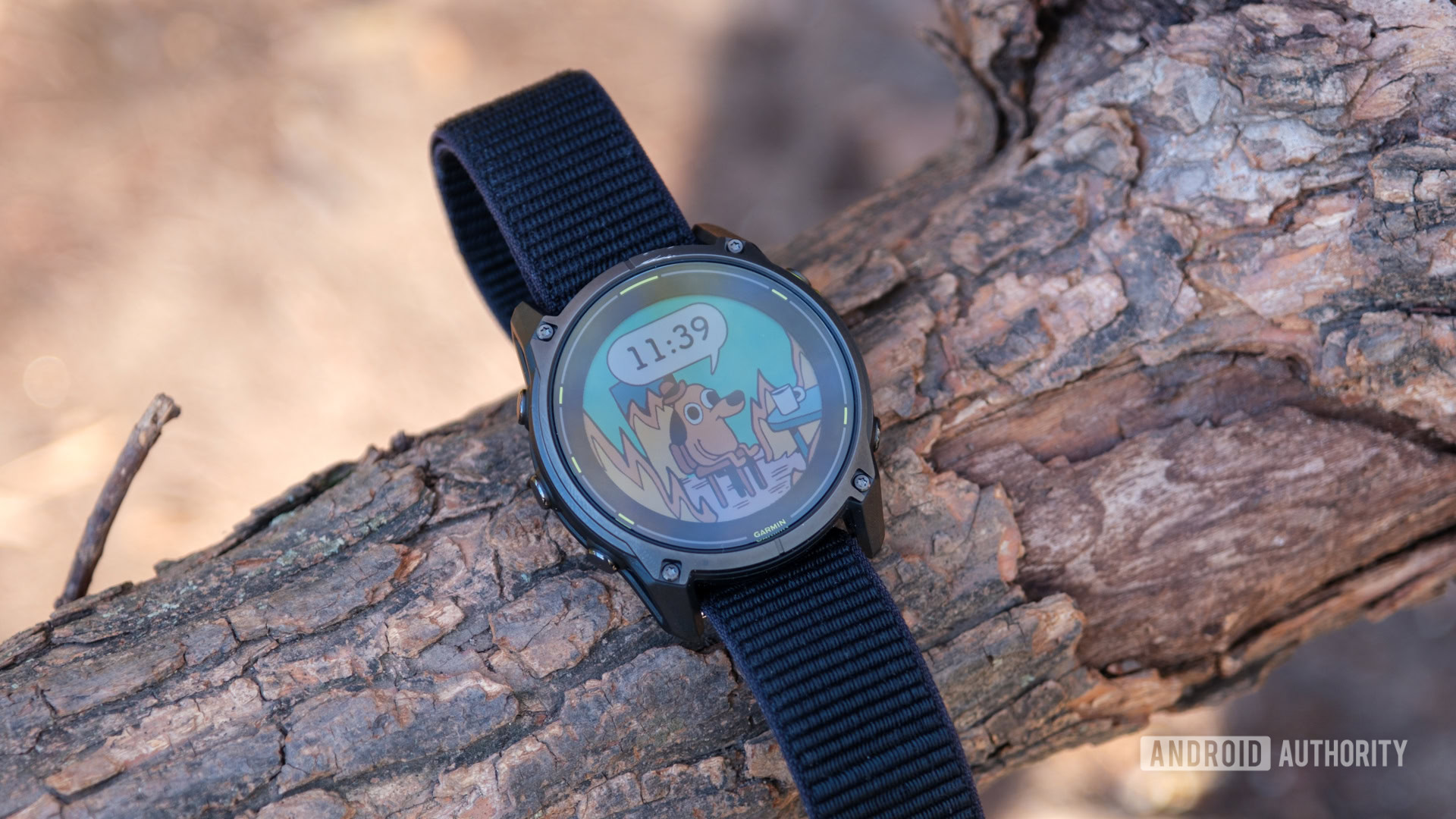
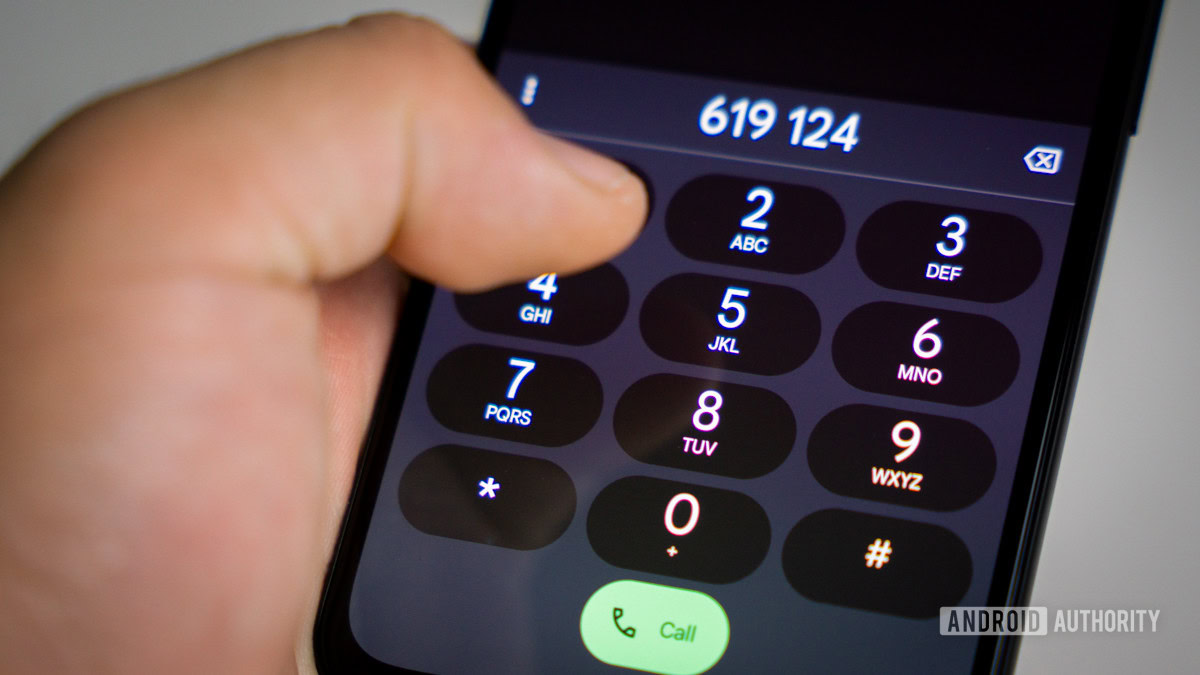




 English (US) ·
English (US) ·